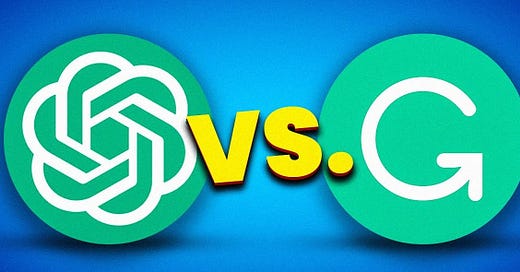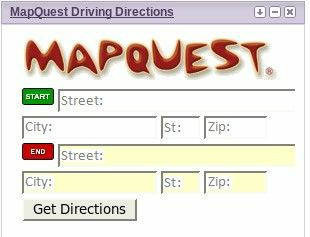Imagine the challenge of communicating effectively when English isn’t your first language. It can be a hurdle that holds you back from career advancement and confidence. Enter Grammarly, a tool that has long provided language support, promising to deliver confidence and alleviate communication anxiety.
However, the rise of Large Language Models (LLMs) like ChatGPT, Gemini, and Perplexity has sparked a pressing question: “Have LLMs killed Grammarly?” According to Noam Lovinsky, Grammarly’s Chief Product Officer, the answer is far more complex than a simple yes or no.
Hi, I'm Snigdha! I'm on a journey to become a 1% better Product Manager every day, and I’m excited to share my learnings with you. My goal is to provide bite-sized insights and practical tips for those exploring the world of product management, helping you grow your PM skills one small step at a time.
Grammarly’s Numbers: A Mixed Bag
Let’s start with the numbers. Grammarly is far from obsolete, boasting over 70,000 professional teams, 30 million daily active users, and integration with 500,000 apps and sites.
Yet, a look at recent statistics reveals a 9.05% decrease in monthly visit growth*1. This decline raises eyebrows and suggests that while Grammarly still serves a massive user base, it faces challenges in staying relevant.
The Challenge and Opportunity of LLMs
The communication domain is experiencing a transformation, with LLMs reshaping how we interact through text. These models have opened up possibilities for real-time language translation, more intuitive content generation, and nuanced tone analysis. Companies are now racing to incorporate LLMs in a way that adds value to users, making the competition fierce.
What’s fascinating is how these models are evolving to address communication-specific challenges. For example:
Contextual Understanding: LLMs can now generate more accurate responses by better understanding the context of a conversation, making interactions feel more human-like.
Tone Customization: Tools like ChatGPT have options to adjust tone, but the market is pushing for even more granular controls tailored to professional, academic, or casual communication.
Real-Time Feedback: The future could involve more interactive writing assistants that provide real-time feedback, correcting not just grammar but also suggesting improvements in argument structure and clarity.
The communication tech market is projected to grow rapidly, and while LLMs bring powerful new capabilities, they are still in the experimental phase.
Noam emphasized that while LLMs are impressive, they haven’t fully cracked the code on personalized and precise communication, which is where tools like Grammarly still hold significant value.
Staying Profitable While Facing Disruption
Noam confidently claimed that Grammarly has been profitable from day one. Yet, profitability alone isn’t enough to sustain relevance. As a longtime Grammarly user myself—I first used it in 2017 to write my university applications—I was impressed by its accuracy and utility. But in the post-ChatGPT era, I, too, found myself drifting away from Grammarly.
Why? ChatGPT offers a lot more in one single ecosystem!
Addressing the Hype Cycle: Moving Beyond the Basics
Grammarly’s mission, “To address anxiety, we deliver confidence,” still holds, but how does the company plan to move forward? According to Noam, the key is focusing on niche areas rather than spreading too broadly or too narrowly.
He shares the anecdote of Thomas Guides. If you don’t know what this is - well these were books of maps that people used in California to reach from one place to another. But when the dot.com bubble emerged—so did MapQuest. This website enabled a user to look up directions for their destination. Soon MapQuest was also obsolete when phones with GPS emerged. Now, in our most recent era—we have self-driving cars for navigation. Noam acknowledges that Grammarly is in the “MapQuest phase” of AI and LLMs.
Noam argues that LLMs like ChatGPT haven’t solved the “right” problem yet. We’re still experimenting with the technology, and while LLMs are impressive, they don’t fully replace specialized tools like Grammarly.
Custom Prompts and New Features
In response, Grammarly is introducing features like custom prompts to make writing more targeted and effective. The company aims to transition from a broad MapQuest-level solution to a more sophisticated “self-driving” level, solving writing challenges in a precise, user-centric way.
Grammarly’s strategy includes:
Helping users with custom writing prompts tailored to their needs, whether it's legal writing, academic papers, or everyday communication.
Leveraging their engineering expertise to ensure that the product remains robust and user-friendly.
Balancing the Niche and the Broad Market
One of the challenges Noam highlighted is finding the “just right” problem to solve. While Grammarly has a strong user base in legal writing, focusing solely on this area would be too narrow for their target addressable market (TAM). Yet, going too broad risks diluting the product’s value.
Grammarly’s Valuation and Future Prospects
Despite the competition, Grammarly is still a significant player in the market, with a valuation of $13 billion as of 2024, following a recent $200 million funding round. To maintain this momentum, the company must keep innovating and finding ways to remain indispensable to its users.
Final Thoughts: The Road Ahead
Noam emphasized that the next chapter for Grammarly is being written now. The company aims to move beyond the hype and focus on concrete, impactful solutions. But will this be enough to keep users like me—and millions of others—engaged in a world where free, general-purpose AI tools are just a click away?
One thing is clear: Grammarly still has its skin in the game, and while it may be at the MapQuest stage, the potential to evolve into a self-driving force in communication technology is certainly within reach but needs to be achieved at a really fast rate before giants like Apple and Microsoft blow Grammarly away. Whether it can achieve that will depend on how well it navigates the next wave of AI disruption.
I use the Freemium version of Grammarly every now and then—only because it gets embedded in my system and browsers. How long will I continue to use it—time will tell.
Side note
Grammarly is actively hiring; especially Sr./Staff PM roles! Apply here.
Next Week
I will talk about how a non-tech, non-AI person can jump into the world of tech and AI. Where should you start, what should you read, how should you read?
If you found this insight valuable, don’t forget to like, share, and subscribe! Let’s keep learning together and Become 1% Better PM. Your support helps me reach more aspiring product managers on their journey.
* monthly visits growth = Percent change in total visits to site from previous month. Includes both desktop and mobile web (source: Crunchbase).






